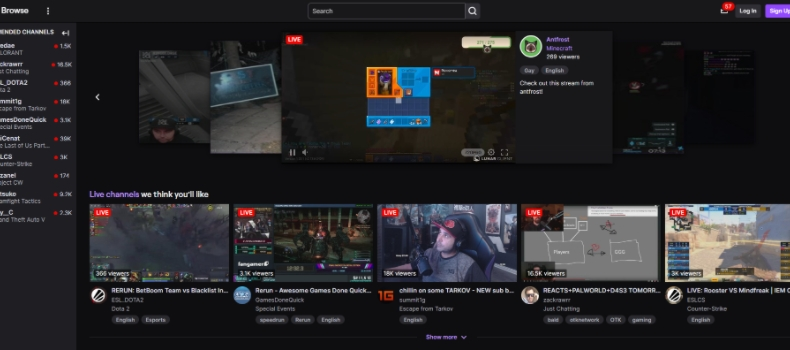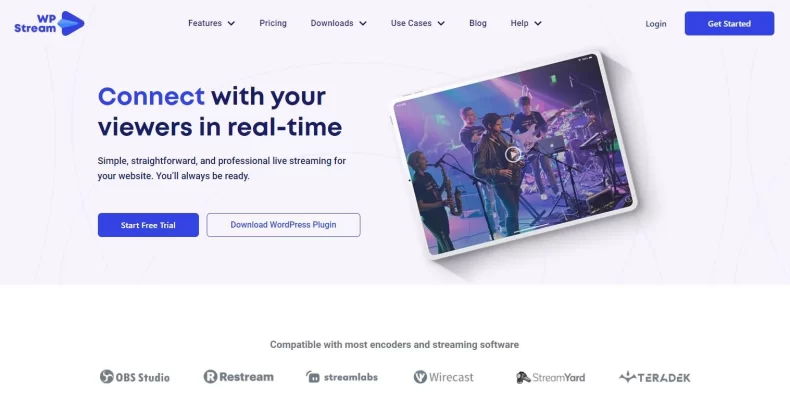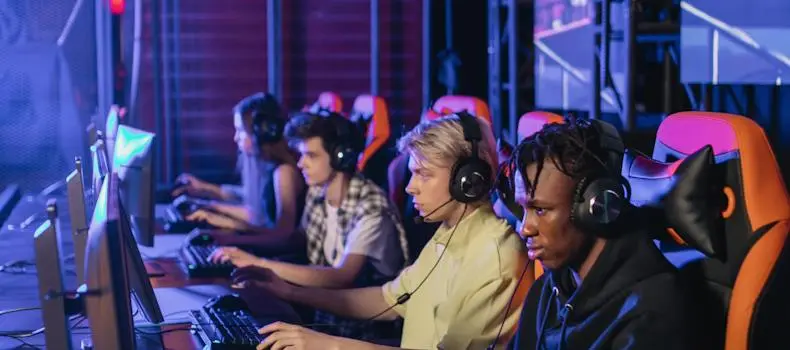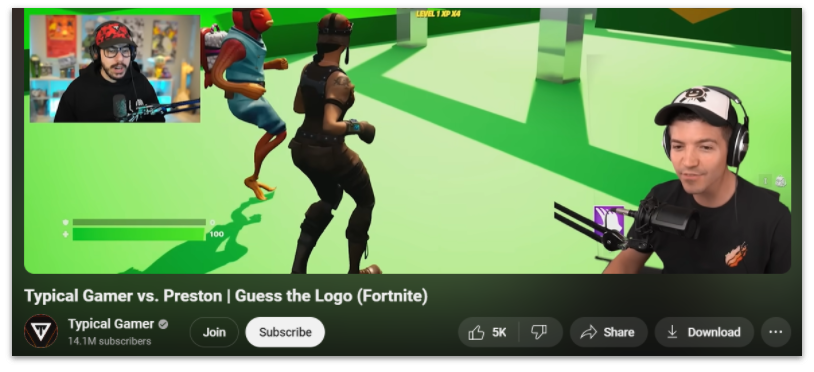Last updated: April 29th, 2025
Introduction
Imagine you’re at a football game, watching the players run, kick, and score. Now, replace the field with a virtual gaming environment and the players with top-notch video gamers. That’s esports for you: competitive video gaming where players battle it out to see who’s the best.
Now, streaming is like setting up a camera at that football game so that other people who can’t be there can still watch all the action live on their screens. E-sports streaming does exactly that but for video game competitions.
As an organizer or a streamer, you’re going to be the director of the show. You want to find a place, or in this case, an online platform, where you can set up your “camera” and let people tune in.

Streaming platforms
There are quite a few platforms out there where you can stream your e-sports events. Some are big, with millions of people tuning in every day. Others are smaller, which might be better if you’re just starting and want to get to know your viewers more personally.
Think about where the people you want to watch your stream are likely to be. Are they on a platform that’s known for gaming? Or are they hanging out on a platform where they watch all sorts of videos? That’s probably where you want to be.
When you’re streaming, you want to make sure that people can watch the games without any hiccups. It’s like making sure everyone in the audience can see the stage without a big pillar in the way.
Don’t worry too much about the behind-the-scenes tech stuff. Most platforms will guide you through setting up your stream with easy steps to follow.

Types of streaming platforms
Free Streaming Platforms
Free streaming platforms like Twitch and YouTube are ideal for e-sports due to their wide audience reach and active community engagement, including live chats. They offer monetization opportunities through ads, subscriptions, and donations, despite being free.
Both platforms are user-friendly, supporting various content formats like live streams and video-on-demand. This flexibility aids in effective brand-building and audience interaction.
They also ensure high-quality streaming, are accessible across multiple devices, and provide valuable analytics for streamers to optimize content and understand viewer preferences. These features make Twitch and YouTube highly beneficial for e-sports streaming.

YouTube
YouTube stands as a highly popular destination for on-demand video content. Its popularity has soared since introducing live streaming in 2011, making it a top choice for hosting both live and pre-recorded videos. With over 2 billion monthly logged-in users, YouTube offers an excellent opportunity to reach a vast audience with streamed content.

Twitch
Twitch has emerged as a premier streaming platform for e-sports events, offering several key benefits. Its user-friendly interface and robust streaming capabilities make it ideal for broadcasting high-quality live e-sports competitions. The platform’s widespread popularity among gaming communities ensures a large, dedicated audience, enhancing viewer engagement and interaction.
Twitch also offers unique monetization options through subscriptions, ads, and donations, providing financial incentives for event organizers and streamers. Additionally, its integrated social features and chat functionality foster a sense of community and real-time interaction between viewers and streamers, creating an immersive and interactive experience.
This makes Twitch not just a platform for viewing e-sports but a hub for gaming culture and community engagement.
White-Label Platforms
Paid white-label streaming platforms for e-sports offer significant advantages: customizable branding for a professional look, flexible monetization options like pay-per-view, and exclusive streaming rights to enhance content value. They provide enhanced security, in-depth analytics for strategic insights, and reliable support for smooth streaming.
These platforms also offer a focused viewer experience, controlled content distribution, easy integration with other tools, and support for high-quality streaming, ensuring a superior and professional e-sports streaming experience. An example of a white-label streaming platform is WpStream.

WpStream
WpStream stands out as an advantageous streaming platform for e-sports live streaming events, offering distinct benefits. It seamlessly integrates with WordPress websites, allowing event organizers to easily embed live streams directly on their sites.
This integration provides a personalized and branded viewing experience, enhancing the professional appearance of the event. WpStream also offers flexibility in monetization, supporting pay-per-view and subscription models, which can be a significant revenue source for e-sports events.
Its user-friendly interface simplifies the setup process, making it accessible for both beginners and experienced streamers. Additionally, WpStream ensures high-quality streaming capabilities, ensuring smooth and reliable broadcasts of fast-paced e-sports action.
So, in simple terms, choosing where to stream e-sports is all about finding the right place for your virtual stage, where people can easily watch and enjoy the gaming action, interact with you, and where you might even make some money.
Don’t be scared off by technical terms or big decisions. Start small if you need to, learn as you go, and have fun. After all, sharing the joy of e-sports is what streaming is all about!

Equipment and Technology
Getting into e-sports streaming doesn’t have to be like solving a complex puzzle. You’ll need some affordable gear to get started, but it’s nothing you can’t handle, even if you’re not a tech guru. Let’s break down the essentials you’ll need to bring your e-sports streaming to life.
Essential Gear for E-sports Streaming:
1. A Good Computer or Console

Whether you’re on a PC or a gaming console, you need something that can run your favorite games well. It doesn’t have to be the fanciest model on the market, but it should be reliable enough so that your game doesn’t freeze or crash when the action heats up.
2. Stable Internet Connection

You need an internet connection that’s like a fast-moving river — smooth and uninterrupted. An internet plan with good upload speed is crucial because you’re going to be sending your game live to the world, and a slow internet connection is like a clogged pipe that makes everything messy.
3. A Webcam

It doesn’t have to be the most expensive one, but something that shows your face clearly. Imagine it as making eye contact with your audience.
4. Microphone

A decent microphone that can pick up your voice clearly without a lot of background noise will make sure your viewers can hear every word you say without straining their ears.
5. Streaming Software

There are free and easy-to-use options out there, like OBS Studio or Streamlabs, that work great for beginners. For those who want a beginner’s level stress-free setup with professional results, WpStream may be your perfect assistant who takes care of the technical stuff.
6. Headphones

A good pair of headphones helps you get into the game and hear everything without distraction. Plus, it keeps the audio from echoing into your microphone. Think of it as tuning into the game’s world without any outside noise.
Putting It All Together
Once you have all your gear, it’s about connecting the dots. The computer or console runs the game. The webcam lets viewers see you, and the microphone lets them hear you.
The headphones keep you focused on the game. The internet connection sends it all out to the world, and the streaming software makes sure it looks good when it gets there.
Remember, you don’t need to break the bank to get started. The most important part of e-sports streaming is you and your content. The fancy equipment can come later as you grow.
Preparation for a Successful E-sports Stream
Planning and preparation are the unsung heroes of a successful e-sports streaming event. Just like athletes spend hours training off the field, a good streamer spends considerable time preparing before going live. Here’s how you can get ready for the big day:

Planning Your Streaming Schedule:
- Consistency is Key: Viewers should know when to tune in. Pick a schedule you can stick to, and make sure it’s one when your target audience is likely to be available to watch.
- Promote Your Schedule: Once you’ve got a plan, shout about it on social media, in gaming forums, and on your streaming channel itself. Use countdowns or event reminders to build anticipation.
- Balance is Important: Don’t burn out. Make sure you balance streaming with rest, social life, and other responsibilities. A tired streamer isn’t an engaging one.
Creating Engaging Content for Viewers:
- Know Your Audience: Understand what your viewers like to watch. Is it the thrill of the game? Your personality? Strategy tips? Tailor your content to what draws your crowd.
- Interact With Your Audience: Respond to chat messages, ask viewers questions, and create interactive segments like Q&A sessions. This makes viewers feel part of the experience.
- Storytelling: Even in gaming, stories captivate audiences. Narrate your gameplay, share your gaming experiences, and build a narrative around your streaming journey.
Rehearsing and Technical Testing:
- Have a Checklist: Make a pre-stream checklist of all the settings and equipment you need to check. This will help you avoid missing anything important in the lead-up to your event.
- Technical Check: Test every piece of your equipment. Ensure your internet connection is stable, your audio is clear, and your video is crisp. Check for any software updates that might be needed before you start.
- Do a Dry Run: Before the event, do a complete run-through. Play the game, talk to the camera, and use all your streaming features as if you’re live. It’ll help you feel more relaxed on the day.
- Backup Plan: Always have a backup plan. If your game servers go down, have a secondary game or content ready to keep your audience engaged.
On the Day of the Event:
- Start Early: Begin your preparations well before your stream starts. This gives you plenty of time to fix any unexpected issues that might arise.
- Set the Scene: Make sure your streaming environment is tidy and conducive to a focused broadcast. A clean, organized space will keep you in the right mindset.
These preparations ensure that you can focus on what you love during your stream — gaming and interacting with your community — while also providing a professional and enjoyable experience for your viewers.

Engaging an esports audience
Engaging an esports audience effectively goes beyond just streaming games. It involves fostering a sense of belonging among viewers and actively involving them in the stream. Here’s how you can deepen the connection with your audience:
Building a Community of Fans:
- Create a Brand: Your stream should have a consistent theme, logo, and color scheme that reflects your personality and content. This visual branding helps fans recognize and feel at home with your stream.
- Engage Off-Stream: Use platforms like Twitter, Reddit, or Discord to engage with your fans outside of your streaming hours. These platforms can help maintain and strengthen the community.
- Regular Updates: Keep your community posted about your streaming schedule, upcoming events, and any changes to your stream. Consistency in communication is key to keeping your community engaged.
Chat Engagement and Moderation:
- Active Participation: As the streamer, you should actively participate in the chat. React to comments, ask questions, and share thoughts to create a two-way conversation.
- Moderation Team: As your community grows, consider recruiting trusted moderators to help manage the chat. They can ensure the conversation remains positive and on-topic.
- Chat Rules: Clearly outline chat rules and enforce them. This helps maintain a welcoming and safe environment for all viewers.
Keeping Engagement Positive and Inclusive:
- Inclusive Language: Use language that welcomes all types of viewers. Avoid jargon that might be off-putting to newcomers to the stream or the e-sports community.
- Positive Environment: Foster a positive streaming environment. Highlight good plays and sportsmanship over mistakes and losses.
- Accessibility Options: Provide options such as closed captions for viewers who might be hearing impaired or non-native speakers.
In essence, building a vibrant e-sports streaming community is about creating a space where fans can not only watch you play but also interact with you and each other in meaningful ways.
By making your streams interactive and ensuring your chat is a welcoming place, you lay the groundwork for a passionate fanbase that feels valued and invested in your streaming journey.

Streaming Tournaments and Competitions:
When it comes to streaming esports tournaments and competitions, the goal is to create a seamless and engaging viewing experience that is as close to the excitement of a live event as possible.
In-depth Analysis and Commentary:
The heart of any good sports broadcast, electronic or otherwise, is insightful commentary and analysis that adds depth to the on-screen action.
- Knowledgeable Commentators
- Pre and Post-Match Analysis
Interviews with Players and Teams:
Adding a personal dimension to your coverage helps audiences connect with the competitors as individuals and can add compelling human interest to the broadcast.
- Pre-Match and Post-Match Interviews
- Feature Segments
- Accessibility
When covering e-sports events, it’s crucial to maintain a balance between catering to hardcore fans who want deep analysis and newcomers who may need more basic explanations.
Always aim for a blend of professionalism and passion, ensuring that your broadcasts are not only informative and insightful but also reflect the excitement and competitive spirit of e-sports.

Monetization and Sponsorships:
Monetizing e-sports streams and securing sponsorships can turn a passion for gaming into a viable career. Understanding how to tap into different revenue streams and partner with brands effectively is key to financial success.
Revenue Streams for Esports Streamers:
- Subscriptions
- Advertisements
- Donations and Tips
- Affiliate Links
Partnering with Brands and Sponsors:
- Identify Compatible Brands: Look for brands that align with your content, audience demographic, and personal values. A good brand partnership should feel natural and not forced.
- Negotiate Terms: Be clear about what you expect from a sponsorship deal and what you’re willing to offer. Discuss deliverables, duration, and payment terms upfront.
- Disclosure: Always disclose sponsored content to your audience. Transparency is essential for trust.

Merchandising and Fan Support:
- Branded Merchandise: Selling branded merchandise like T-shirts, hoodies, mouse pads, and stickers can be a significant revenue stream
- Patreon and Fan Funding: Platforms like Patreon allow creators to receive funding directly from their fans in exchange for exclusive content or experiences.
Remember, while it’s important to monetize your stream to support your efforts, always prioritize your content’s integrity and your relationship with your audience. The most successful monetization strategies are those that provide value to both the streamer and the audience, creating a sustainable and supportive community around your e-sports endeavors.
Promotion and Marketing
Effective promotion and marketing are essential for growing your e-sports streaming audience and building your brand. Let’s explore some strategies that can help you get noticed in the competitive world of e-sports streaming.

Social Media Strategies for Esports Streamers:
- Consistent Branding Across Platforms: Make sure your social media profiles are visually consistent with your streaming brand.
- Content Tailored to Each Platform: Different types of content work better on different platforms.
- Engagement with Followers: Respond to comments, participate in relevant conversations, and engage with your followers’ content.
- Teasers and Announcements: Use social media to tease upcoming streams, announce special events, and generate excitement for what’s coming next on your channel.

Collaborations with Influencers and Other Streamers:
- Cross-Promotion: Collaborate with other streamers or influencers for cross-promotion. This can expose your channel to a broader audience that has similar interests.
- Guest Appearances: Invite other streamers or personalities to appear on your stream and offer to do the same. This can mix up your content and keep your audience engaged.
- Shared Giveaways: Partner with other content creators for giveaways that can drive traffic between your respective channels.
Additional Tips:
- SEO for Content: Use search engine optimization (SEO) techniques to make your content more discoverable. Include relevant keywords in your video titles, descriptions, and tags.
- Analytics: Use analytics tools to understand where your views are coming from and what content performs best. Adjust your strategy based on this data.
- Email Newsletters: Collect email addresses (with permission) and send out newsletters to keep your community informed and engaged with your content.

In marketing your e-sports streaming brand, creativity and authenticity are your greatest assets. By building a coherent and consistent brand across various platforms, actively engaging with the community, and collaborating with others in the space, you can create a strong presence that resonates with fans and helps your channel grow.
Hello WpStream Theme and eSports Demo

Take your gaming brand to the next level with our FREE Hello WpStream theme and its dedicated eSports demo! Designed specifically for gamers and esports enthusiasts, this powerful combo lets you stream live matches, showcase your skills, and build a professional online presence, all from your own website.
With a sleek design, easy setup, and full integration with WpStream’s livestreaming technology, you’ll have everything you need to start streaming directly to your fans without relying on third-party platforms. Get started today and make your site the ultimate destination for your gaming community!
Conclusion
WpStream emerges as a standout choice, particularly for those looking to integrate live streaming within their WordPress websites seamlessly. Its platform offers a balance of ease of use and professional functionality.
WpStream allows for comprehensive customization and branding, essential for creating a unique and memorable viewer experience. The platform’s robust monetization options, including pay-per-view and subscription models, provide flexibility in generating revenue. Additionally, WpStream’s focus on high-quality streaming ensures that fast-paced e-sports action is delivered smoothly and reliably, keeping viewers engaged.
To make launching even easier, WpStream also offers the FREE Hello WpStream theme along with a dedicated eSports demo, tailored specifically for gamers who want to build a professional, stream-ready site. With everything you need to set up and start streaming in minutes, it’s the ultimate solution for gamers ready to take control of their content and grow their community.
Table of Content







